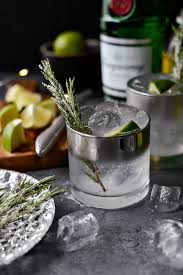Limoncello: Italy's Sunshine in a Glass
Origins and History
Limoncello, the bright yellow Italian liqueur, originated along the Amalfi Coast and in Sorrento, where the unique local lemons have been cultivated for centuries. While its exact origins are disputed, with both Sorrento and Capri claiming to be its birthplace, the lemon liqueur has been a traditional part of southern Italian life for at least a century.
Traditional Production
The Lemons
The finest limoncello traditionally uses Femminello St. Teresa lemons, also known as Sorrento or Sfusato lemons. These unique characteristics include:
- Large size and elliptical shape
- Thick, aromatic peel
- Low acidity
- High essential oil content
Production Process
-
Lemon Preparation
- Careful washing and cleaning
- Peeling only the outer zest
- Avoiding bitter white pith
-
Infusion
- Steeping lemon zests in pure grain alcohol
- Traditional infusion period: 15-80 days
- Kept in cool, dark conditions
-
Sweetening
- Adding simple syrup
- Balancing alcohol content
- Filtering process
Regional Variations
Sorrento Style
- Higher alcohol content
- Intense lemon flavour
- Traditional production methods
- Protected geographical indication
Amalfi Coast Style
- Slightly sweeter profile
- Local lemon varieties
- Family recipes
- Artisanal production
Modern Production and Consumption
Commercial Production
- Industrial scale manufacturing
- Quality control standards
- Export considerations
- Shelf stability requirements
Global Market
- Growing international popularity
- Premium and mass-market versions
- Export regulations
- Market adaptations
Serving and Enjoyment
Traditional Service
- Served ice-cold (-20°C)
- Small, chilled glasses
- After-dinner digestif
- Summer refreshment
Modern Applications
- Cocktail ingredient
- Culinary applications
- Dessert accompaniment
- Mixed drinks
Cultural Significance
Italian Tradition
- Family recipes
- Social gatherings
- Holiday celebrations
- Gift-giving
Global Impact
- Cocktail culture influence
- Culinary adaptations
- Tourism connection
- Cultural exchange
Making Limoncello at Home
Essential Ingredients
- High-quality lemons
- Pure grain alcohol
- Filtered water
- Sugar
Basic Process
- Clean and peel lemons
- Infuse peels in alcohol
- Prepare simple syrup
- Blend and filter
- Bottle and age
Tips for Success
- Use organic, unwaxed lemons
- Avoid pith completely
- Patient infusion period
- Proper storage conditions
Food Pairings
Traditional Pairings
- Italian desserts
- Fresh fruit
- Light pastries
- Dark chocolate
Contemporary Pairings
- Seafood dishes
- Citrus-based desserts
- Ice cream
- Cheese selections
Storage and Preservation
Proper Storage
- Cool, dark place
- Sealed container
- Temperature control
- UV protection
Shelf Life
- Commercial: 2-3 years
- Homemade: 1-2 years
- Refrigerated: Extended life
- Signs of degradation
Health Considerations
Traditional Benefits
- Digestive aid
- Vitamin C content
- Antioxidant properties
- Mood enhancement
Modern Perspective
- Alcohol content awareness
- Sugar content
- Moderation guidelines
- Dietary considerations
Future Trends
Innovation
- Organic versions
- Craft productions
- Flavour variations
- Sustainable practices
Market Evolution
- Premium positioning
- Artisanal focus
- Global adaptation
- New applications
Conclusion
Limoncello represents more than just a liqueur; it embodies Italian culture, craftsmanship, and tradition. Whether enjoyed traditionally as a digestif or incorporated into modern cocktails and cuisine, its bright, sunny character continues to captivate people worldwide. The balance of sweet and tart, coupled with its versatility, ensures limoncello's place in both traditional and contemporary food and drink culture.



Comments (0)
There are no comments for this article. Be the first one to leave a message!